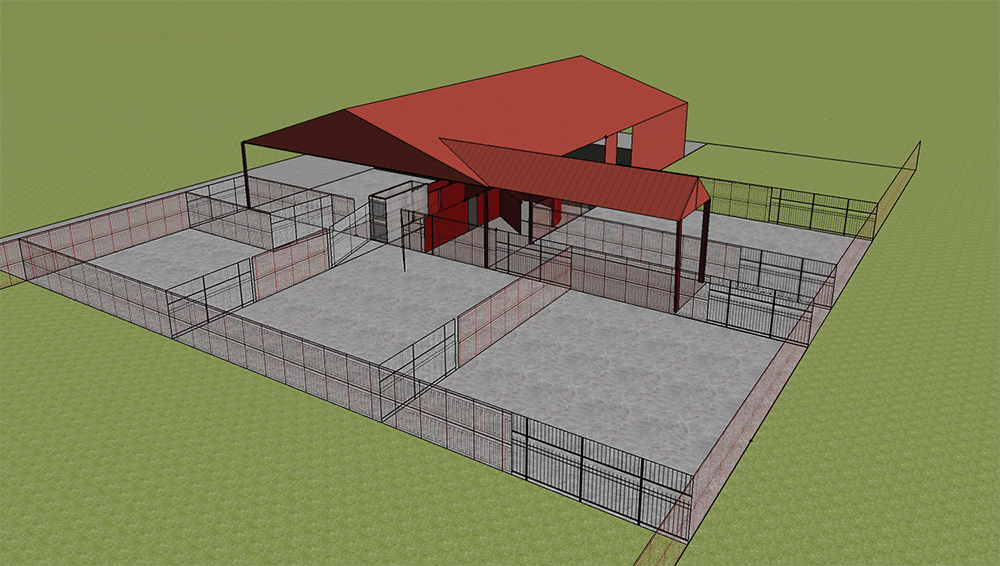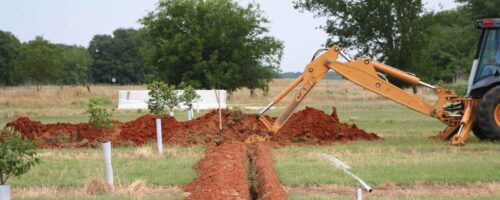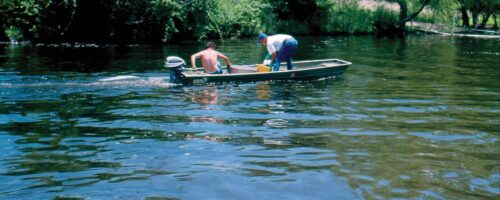Cattle handling facilities are necessary for proper animal husbandry. Low stress cattle handling practices combined with good facilities will allow you to process cattle safely and efficiently. Here are some things to think about when designing and building cattle handling facilities.
Location
The best location is one that is easily accessible by cattle and trucks, and is well drained. Other things to consider are: good air flow in the summer and wind breaks in the winter, few distractions, water, electricity and shade. It is likely that you do not have a location with all of these features, so consider their relative importance to your operation. Comfortable facilities will reduce stress and increase enjoyment of both animals and people.

Many times, handling facilities are located next to the road. This makes access easy, but it also makes it easier for rustlers to steal your cattle. In addition, busy roads can distract animals. However, don’t place pens in the middle of a pasture. Cattle typically move down fence lines, making it difficult to pen cattle if your facilities are in the middle of a pasture. If possible, select an area where several pastures converge. This will allow you to take advantage of cattle behavior as well as pen cattle from all adjacent pastures. Cattle will also become acclimated to the pens as you rotate pastures.
Size and Layout
Design your facilities to fit your current herd, but consider future expansion needs. It is generally recommended that holding pens provide 20 square feet per cow and 14 square feet per calf. For a herd of 35 cow-calf pairs, you would need a holding pen that is at least 1,200 square feet, with additional pens for sorting. The number of pens needed depends on how you plan to use them. For a cow-calf producer, as few as two or three sort pens can be sufficient, but a stocker operation may require more.
Crowding Areas
Crowding can be accomplished by a simple crowd gate, a funnel or a sweep tub that terminates into the working chute. For calm cattle and experienced cattlemen, this area can be see-through. However, solid sides will allow for better cattle movement when there are distractions. The working chute or alley should hold at least three animals and five is better. Ideally, the width should be adjustable to accommodate everything from calves to bulls. Solid, sloped sides are an alternative that will help prevent calves from turning around. For most cattle, an alley width of 28 inches at the top and 16 inches at the bottom works well on an alley 60 inches tall. Increase this width for large breeds and bulls. Curved alleys are more difficult to construct, but usually allow for better cattle movement. Avoid tight corners by using short sections and keeping the radius greater than 12 feet. If you need to load semitrucks, be sure your loading ramp is adjustable up to 48 inches from the ground and at least 12 feet long. For a small operation with ground load trailers, a small crowding pen the width of your trailer will be sufficient.
Squeeze Chute
A good squeeze chute makes restraining animals safe and easy. It can be as simple as a headgate at the end of your working alley or as complex as a hydraulic chute. Many different chutes are available. Be sure to “test drive” several until you find the one you like best.
Additional Considerations
When deciding on a layout, look for designs online and from your local extension agent. Before breaking ground, be sure to set flags or paint lines on the ground and walk through it. This will give you a better idea of how they will work and let you easily consider changes.



Comment